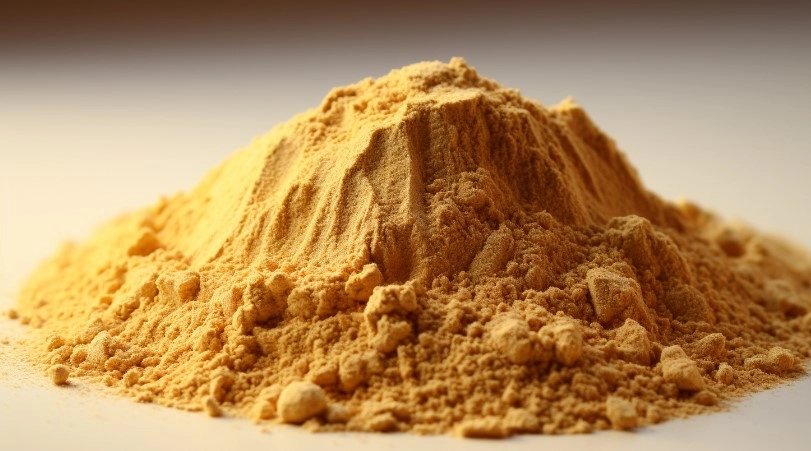푸에라린 30%, 98%의 용도

푸에라린 플라본으로도 알려진 푸에라린은 천연 이소플라본 탄소 배당체로, 푸에라린의 핵심 성분으로 의약적 역할을 합니다. 푸에라린은 혈당 강하, 혈중 지질 조절, 혈관 보호, 항산화 스트레스, 항감염, 인슐린 감수성 지수 개선, 부작용이 적은 기능을 가지고 있어 심혈관 및 뇌혈관 질환, 암, 파킨슨병, 알츠하이머병, 당뇨병 및 당뇨병 합병증 치료에 임상적으로 사용되는 "식물성 에스트로겐"으로 알려져 있습니다.
출처: 푸에르라리아 로바타 (윌드.) 오휘는 마른 뿌리에서 추출했습니다.
속성: 갈색 분말
CAS 번호: 3681-99-0
분자식: C21H20O9
분자량: 416.378
푸에라린의 임상적 사용
푸에라린 당뇨병 치료
푸에라린은 혈당 농도를 낮춰 당뇨병을 치료할 수 있습니다. 푸에라린은 인슐린 수용체 기질 IRS-1 및 인슐린 유사 성장 인자 IGF-1 단백질을 상향 조절하고 인슐린 수용체 InsR 및 퍼 옥시 솜 증식 인자 활성화 수용체 PPARα의 발현을 촉진하여 혈당을 감소시키고 당뇨병을 치료할 수 있습니다. 또한 푸에라린은 α- 글루코시다아제의 활성을 억제하여 혈당 농도를 낮추고 당뇨병 치료 목적을 달성 할 수 있습니다.
푸에라린 항종양 효과
푸에라린은 종양 세포의 증식에 명백한 억제 효과가 있으며 종양 세포의 세포 사멸을 촉진하고 종양 세포에 치료 효과를 가질 수 있습니다.
푸에라린 간 보호 효과
푸에라린에는 사포닌이 함유되어 있어 면역 손상으로부터 간 조직을 보호할 수 있습니다. 푸에라린은 위 흡수를 통해 간 손상을 보호하고, 활성화 된 간 성상 세포 세포 사멸을 유도하고, 화학적으로 유발 된 간 섬유증을 역전시키고, 사염화탄소에 의해 유발 된 급성 간 손상을 보호 할 수 있습니다. 동시에 푸에라린은 다양한 생리적 활성을 가지고 있습니다.
푸에라린 부정맥 방지, 협심증 방지
연구에 따르면 푸에 라린은 클로로포름으로 유도 된 쿤밍 마우스에서 심장 세동의 발생률을 감소시키고 아코 니틴으로 유도 된 SD 쥐에서 심정지, 심실 수축기, 심실 세동 및 심실 빈맥의 역치를 크게 증가시켜 푸에 라린이 부정맥 치료에 적합하다는 것을 나타냅니다. 푸에라린 주사는 관상 동맥 심장 질환 협심증 치료에 효과적입니다. 그 메커니즘에는 첫째, 심박수 및 혈압 감소, 활력 징후 개선, 심근 산소 소비 감소, 관상 동맥 확장, 심근 저산소증, 허혈 및 혈액학 지수 개선; 둘째, 혈액 점도를 낮추면 혈관을 부드럽게하고 죽상 경화증을 개선하며 혈관 내피 세포를 복구하고 질병 악화를 예방하는 효과가 있습니다. 연구에 따르면 관상 동맥 심장 질환 및 협심증이있는 노인 환자의 치료에 푸에 라린 주사를 적용하면 발병률을 개선 할뿐만 아니라 혈관을 확장하고 저산소증과 허혈을 완화하며 혈액 유변학, 근육 산소 소비 지수 및 기타 지표를 더욱 개선 할 수 있으며 그 효과가 이상적이라는 것이 확인되었습니다.
푸에라린 심혈관계에 미치는 영향
푸에라리아의 총 플라보노이드는 뇌와 관상동맥의 혈류를 증가시킬 수 있습니다. 푸에라린은 분명히 동물과 인간의 뇌 순환과 말초 순환을 촉진할 수 있습니다.
푸에라린 공급업체: www.backvita.com
이메일: [email protected]
전화 +86 (029) 8187 2325
